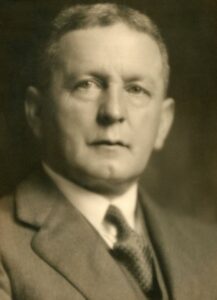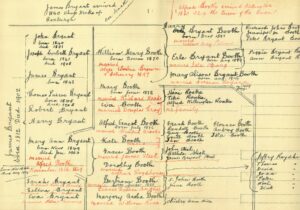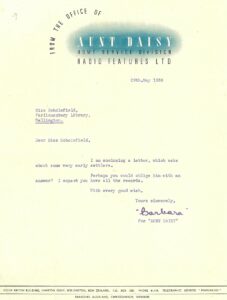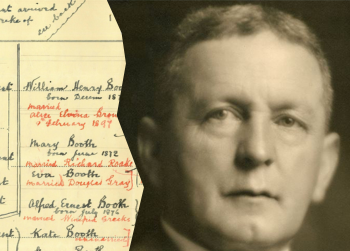A remarkable 80 year old collection of letters and family trees detailing the genealogy of thousands of individuals descending from early European settlers of the Wellington Province has now been digitised and is available to view on Wellington City Recollect.

The 1930s saw both local and central government give increasing thought to how New Zealand might celebrate the 1940 centenary of the signing of the Treaty of Waitangi. The idea that there would be a grand centennial exhibition in the capital had been decided as far back as 1930 following an agreement between the Wellington City Council and the ‘United’ government of Prime Minister Joseph Ward. However, provincial centres across the country also wanted to mark the occasion so funds were raised for projects such as the planting of stands of native trees and the construction of community facilities such as centennial libraries, halls and Plunket rooms. In 1937 the Wellington Historical Committee was formed to come up with a different kind of project to mark the occasion and Dr Guy Scholefield was appointed as its chairman. He had begun his professional life as a journalist, had written several books about New Zealand’s history and had a particular interest in biography, being the founder and editor of the Who’s Who series of publications from 1908.

In 1926 he was appointed to be the chief Parliamentary Librarian as well as the ‘Dominion Archivist’, heading the institution that would eventually become Archives New Zealand. Around the same time he also began work on his ground-breaking Dictionary of New Zealand Biography which was eventually published in 1940. With such a background, it is perhaps not surprising that he steered the efforts of the committee towards the creation of a ‘Pioneer Roll’. The concept was that anyone whose family had first settled within the Wellington province between 1840 and 1855 (or born in the province up to 1865) would be eligible for inclusion. Their name would be recorded on the roll and they would be presented with a commemorative badge. To be included, applicants would have to submit as much information about their lineage in New Zealand as possible. Publicity about the project began in early 1939 in both newspapers and radio broadcasts, with Scholefield soon juggling hundreds of separate lines of correspondence with people from across the country. He knew that while most of the early European pioneers would have passed away, many of their children would still be alive. It was important to capture their stories before this knowledge was lost; something especially important in an era when sources of genealogical information were scant and access to official birth, death and marriage records was difficult.

When the project was completed in late 1940, Scholefield had assembled over 6000 pages of letters, family trees & shipping lists which detailed the genealogy of thousands of individuals. The pages were gathered together under the surname of the settler who established that particular familial line and the resulting files were gifted to the Wellington Central Public Library. In 1996 the Wellington Branch of the NZ Society of Genealogists assisted the library by photocopying the papers, which were then compiled into 23 bound volumes to improve access and protect the original fragile manuscripts. A follow-up project in 2005 saw members of the branch create a name index of over 52,000 references which was released as a CD-ROM ‘finding aid’ in 2007, but this still required access to the physical bound volumes; this became difficult after the closure of the central library in 2019.
With this latest project, library staff returned to the original papers which were colour scanned, straightened and adjusted. The CD-ROM was reverse-engineered and the resulting data was synchronised with the image files, making the Scholefield Papers available as a fully-searchable digitised resource for the first time on our heritage platform, Wellington City Recollect.
The Scholefield Papers on Recollect


